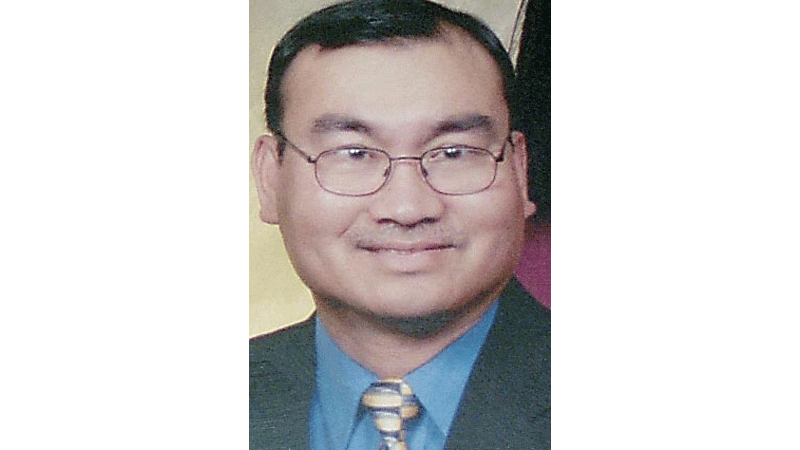The man behind Mahone’s Tavern
Published 9:26 am Friday, December 23, 2011
by Greg Bell
• First in a two-part series
Little Billy Mahone saw a handsome carriage with a fine pair of horses draw up outside his father’s tavern, which was located directly across from the courthouse in the town of Jerusalem, Southampton County, Va.
The man stepped from the carriage and entered the bar, where he soon began gambling with Billy’s father, Fielding Mahone. Luck was not on the elder Mahone’s side this day as he lost most of his money and told Billy to continue his hand and he was going to sleep. When he awoke from his nap, he discovered that Billy had won all the man’s money, his horses and carriage and that they were currently gambling for the servant. His father asked his son for the money and Billy replied, “Here is what you lost; I am going to keep the winnings and educate myself.”
It was in this environment where young Billy Mahone spent his childhood that he developed his fierce independence and self-determination that would serve him so well later in life. He was considered a mischievous child with a devilish streak, and the mothers of the local boys warned their children to stay away from Billy. He hung around the tavern and delivered drinks and took care of patron’s horses and developed a taste for gambling on horses, cock fights and poker.
Mahone left the tavern and enrolled at Virginia Military Institute, graduating in the Class of 1847. His first job was a teacher, where he continued his studies and focused on mathematics and engineering. In 1849, he got his first job in the railroad industry, working as a surveyor for the Orange & Alexandria Railroad. His driving self-determination soon propelled him to the top of his field as he was made chief engineer and later president of the Norfolk and Petersburg Railroad at the early age of 33. One of his most notable achievements with the railroad was engineering and constructing the railroad through the bottomless Dismal Swamp in eastern Virginia. This railroad line is still in use today.
When Virginia seceded, Mahone who had been an ardent secessionist, put aside his railroad career and accepted the colonelcy of the 6th Virginia Regiment. His first assignment came when Gov. John Letcher ordered him to seize the Gosport Navy Yard. Mahone was promoted to brigadier general in November 1861 and participated in nearly all the major battles fought with the Army of Northern Virginia, beginning with the Peninsula campaign and ending at Appomattox.
“Every inch a soldier, though there were not many inches of him” was how one soldier described the brigade commander. He was a very small man, standing only 5 feet, 6 inches tall and weighing a mere 125 pounds, and was compared to a bantam rooster or a gamecock in appearance. He had blue eyes, kept his hair long with a mustache and long beard and had a high, piercing voice.
As a brigade commander, William Mahone’s career was not distinguished. He was widely criticized at Gettysburg for failing to attack with his brigade on the afternoon of July 2 during Longstreet’s assault on the Round Tops. Mahone stated that he had been given different orders and that in the confusion his brigade did not support the attack at the critical moment when Anderson moved forward.
Gen. Mahone’s star did not rise until 1864, when he was given command of a division and ably demonstrated his ability to lead larger units than a brigade at the battles of The Wilderness and Spotsylvania. He earned his title “Hero of the Crater” on July 30, 1864, after his division successfully counterattacked and drove back the Federals after the mine was exploded under the Confederate lines. The explosion made a large breach in the southern lines, and the Yankees poured through nearly unopposed but hesitated, gawking at the huge crater and the widespread destruction.
It was a very critical moment for the Army of Northern Virginia as the Yankee army could have walked into the town of Petersburg and split the Southern army in two. Gen. Mahone brought his division in place behind the breach and counterattacked, driving back the federals with great slaughter and capturing many prisoners. After the fight on Aug. 2, President Davis telegrammed Gen. Lee, informing him that William Mahone was to be promoted to major general for his memorable service on July 30.
Mahone went on to lead his division with great distinction throughout 1864 during the Petersburg campaign, leading his troops to many victories and winning the admiration of Gen. Lee in the process.
GREG BELL is a Courtland resident and Chesapeake businessman. His email address is gregbell@bbhose.com. Information for this column was obtained in part from “Nine Men in Gray,” by Charles Dufour, Doubleday Publishing, 1963.





